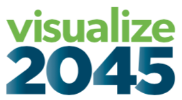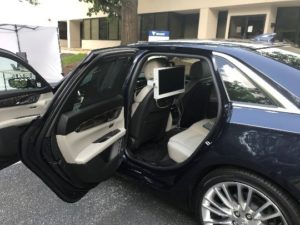Connected and Automated Vehicles (CAV’s), also known as driverless cars utilize technological advancements to enable vehicles to take over some or all the driving responsibilities that a person has traditionally fulfilled. Driverless cars will impact the future – but how and when remain uncertain.
Other technologies will expand our transportation options, improve operations and expand the information at our fingertips. We need to anticipate possibilities and identify how the transportation system needs to adapt with technology.
The TPB has conducted a webinar series to raise awareness and understanding of critical issues related to CAV. The TPB has produced a white paper that also supports the development of the region’s planning, policy, and programming priorities related to CAVs. This paper identifies actions the TPB may take to further achievement of its goals and minimize the potential for adverse impacts as CAVs are deployed.
Learn more about the TPB planning activities for this factor:
Connected and Automated Vehicles
Connected and Autonomous Vehicles (CAV’s), also known as driverless cars, utilize technological advancements that could change how we imagine traveling in the future. It is important for the transportation planning process to consider what role CAV’s may play in our transportation system and how to ensure they help us achieve our goals, as more technology becomes available. At TPB, we’re examining these issues, identifying TPB’s roles in CAV planning and coordination, as well as the roles of federal, state, and local partners.
In 2020, TPB produced a whitepaper on Connected and Autonomous Vehicles: Download the CAV Whitepaper
On January 19, 2022, the TPB adopted CAV principles:
The deployment, use, or operation of Connected and Automated Vehicles (CAVs) in the National Capital Region should:
- 1. ensure the safety of everyone on or near transportation facilities, in all situations.
- 2. ensure CAVs’ benefits are available equitably to all people in the region, and avoid disproportionate negative impacts to any group or community.
- 3. increase mobility options for all.
- 4. increase opportunities for and quality of accessible transportation, including for persons with disabilities.
- 5. maintain and enhance opportunities for and the quality of bicycling and walking in the region.
- 6. retain the operational priority for ridesharing and transit vehicles on the region’s roadways.
- 7. enhance the provision of transit, including providing opportunities for microtransit access to the region’s high-capacity transit (HCT) stations.
- 8. bolster regional environmental and land use objectives, including prioritizing shared vehicles and advancing decarbonization of the transportation system.
- 9. prioritize reduction of vehicle miles of travel and minimize zero occupant vehicle miles of travel.
- 10. ensure freight and goods movements that help minimize disruptions and facilitate livability of the region’s communities.
- 11. ensure security (including cybersecurity) and privacy, and prevent risks to people and infrastructure.
- 12. interoperate safely with non-automated vehicles, vehicles with differing levels of automation, and all other transportation system users.
- 13. be accompanied by addressal of legal liability issues relating to crashes, failures, and safety, including ensuring that CAVs at varying levels of capability are operated within those vehicles’ technological capabilities and limitations, and stipulating safe and responsible actions and choices by vehicle manufacturers, owners, operators, and users.
- 14. bolster effectiveness of emergency and incident response, systems management by traffic operations centers, and information sharing among agencies and the public.
- 15. bolster interjurisdictional coordination and technical interoperability among TPB member agencies, in conjunction with relevant national efforts and standards.
- 16. provide public revenues that are no less than the costs they impose on infrastructure, transportation systems management and operations, and communities.
- 17. make data freely available to TPB member agencies to enhance planning, operations, and emergency preparedness and response.
- 18. be accompanied by robust efforts by TPB and member agencies to keep abreast of evolving technology to enhance support of TPB’s goals
CAV are one of the Future Factors we are exploring to inform the update to Visualize 2045 – learn more.
Download Future Factors infographic
The Systems Performance, Operations and Technology Subcommittee (SPOTS) advises the TPB on matters of performance outcomes of the transportation system; transportation operations and management, including considerations of Intelligent Transportation Systems (ITS) technologies in improving those operations; and emerging transportation technologies. The Subcommittee also provides a regional forum for coordination among Transportation Planning Board member agencies and other stakeholders on these topics.
Maryland DOT CAV activities: Actions in Maryland on Connected and Automated Vehicles
Virginia DOT Connected and Automated Vehicle Program: Connected and Automated Vehicle Program – Programs | Virginia Department of Transportation (virginiadot.org)


